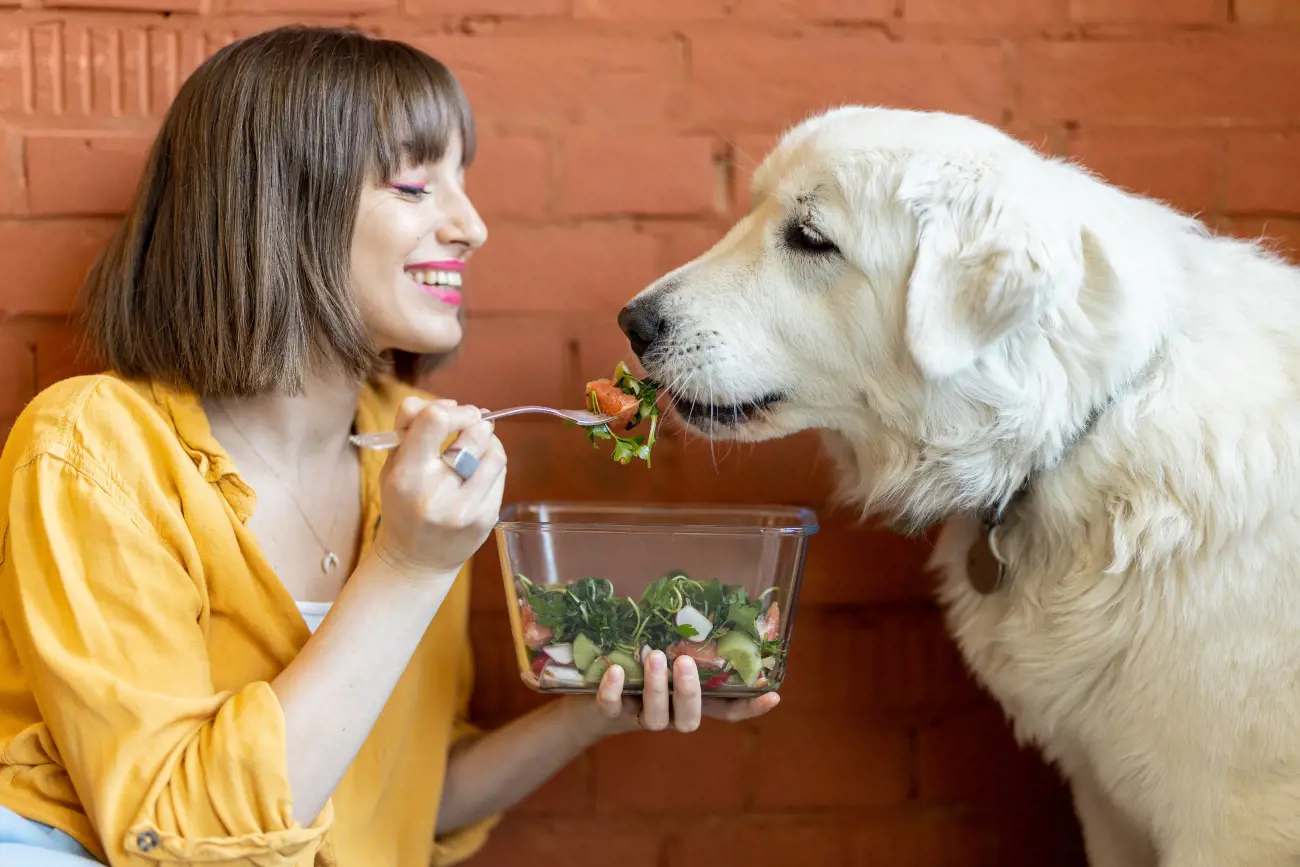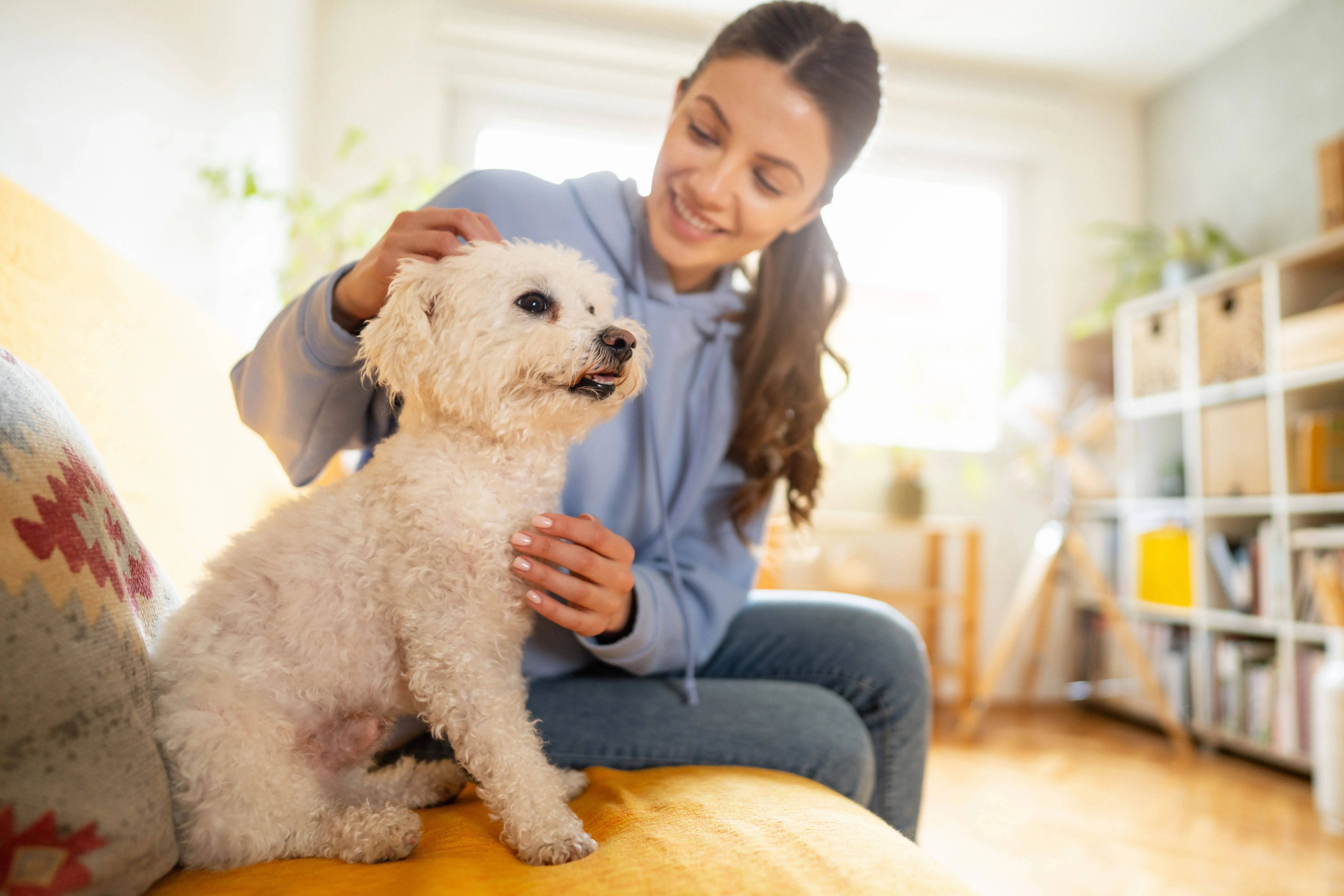How to help your pup recover from a dog attack
6th October, 2021
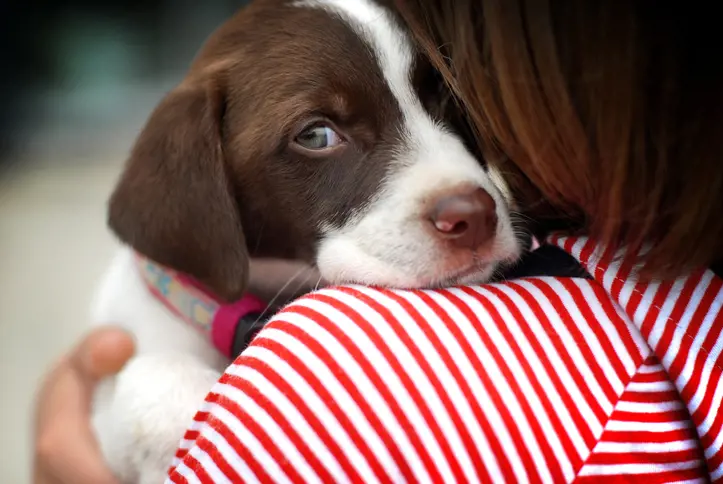
Here’s a situation we hope you don’t ever come up against - helping your pup recover from an attack by another dog.
Maybe your dog has run into an aggressive animal; perhaps your pet has some combative tendencies of their own that spark off an unpleasant encounter; maybe one or both animals are feeling unusually territorial or anxious that day.
Whatever the cause, scuffles between dogs are all part and parcel of dog ownership – and there may be times when your pup comes away from an encounter badly bruised, both physically and emotionally. So how do you tend to your animal and make sure that the scars – both physical and mental – don’t haunt them for some time to come?
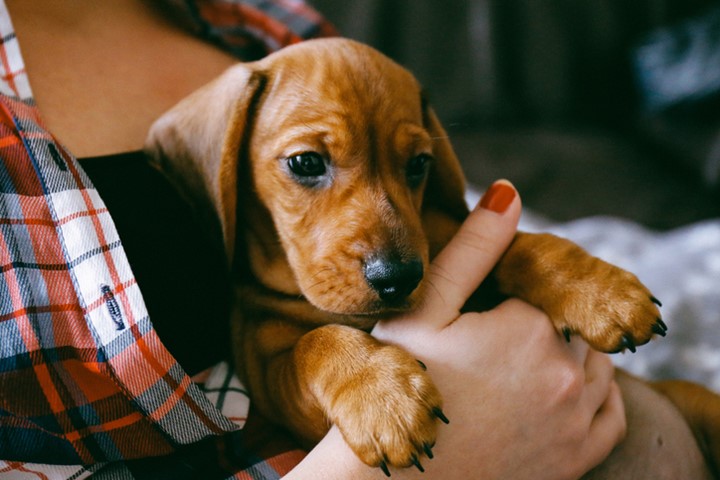
One course of action is probably obvious enough: get them seen by a vet as quickly as possible. There may be scrapes, scars and puncture wounds to deal with. Dog insurance will help you cover the costs of any vet bills.
But how do you tend to their emotional wellbeing? And first and foremost: why do these canine scuffles happen in the first place, and what can you do to prevent them?
Why dog attacks happen
Outbreaks of aggression between dogs – or, very often, by one dog upon another – will often happen out in the open, where dogs are not always being actively supervised, and where their owners may not be stepping in promptly to stop encounters from turning aggressive. It can be difficult for owners to distinguish when their dogs are fighting, or simply playing roughly. It’s also a fact that, when you put several dogs together with different personalities and ways of playing, fireworks can result.
Some dogs simply aren’t that well socialised – they may get into each other’s faces, making confrontation more likely. Other dogs just aren’t that comfortable around others, and can quickly get anxious and snappy in social settings. Or they may simply be in a playful mode – but that playfulness can be misinterpreted by another dog, which may take it as a sign of aggression and react accordingly.
Behaviours that can bring on aggression and attacks include mounting (perhaps the most common trigger); forcing play on a dog who doesn’t want to get involved; or, conversely, trying to break up play between two other animals who are enjoying themselves and don’t want to be interrupted. Other dogs may guard their owners or resources (food, toys); others still just have a propensity to fight.
Whatever the cause of a conflict between dogs, the end result can be serious: a dog who has suffered an attack may be in a state of shock, and – in the longer term – may lose that confidence and behaviour training that you have spent months, even years, instilling in them.
Your dog’s been attacked – now what?
If your dog is unlucky enough to be on the wrong end of an attack, your first step should be to get them seen by your vet. Your dog’s visible wounds may seem small and superficial but there may be more serious, less visible damage underneath.
Dogs’ canine teeth are large and powerful, and the aggressor may have caused serious harm to the organs beneath the skin.
The physical effects of an attack, though upsetting to see, are at least relatively straightforward to categorise and treat. Your vet will be able to treat any injuries sustained during the attack, and it is here that you may find some dog insurance useful in offsetting some of the costs of treatment.
You may also want to get the name and address of the owner of the other dog, and take photos of your dog’s injuries if it’s a serious attack.
Longer-term effects
The mental and emotional fallout from such an incident, however, may be harder to pin down. You may well notice that, in the immediate aftermath of the attack, your dog appears jumpy and agitated. This is normal: the adrenaline – the ‘fight or flight’ hormone that animals and humans produce in potentially dangerous situations – will be pumping.
As your dog recovers from the episode, they may experience some ongoing emotional troubles – for example, a negative response (anxiety) connected with the place where the attack happened. They may even feel a heightened anxiety simply being around other dogs, as these sociable situations will inevitably trigger memories of the attack.
Your pet might either get very shy around other canines – or far more defensive, guarding their own space aggressively. They might find that any dogs who remind them of their attacker (the same coat colour, for example, or breed) trigger negative reactions – fear and/or aggression.
In a worst-case scenario, they may simply feel uncomfortable, anxious or aggressive around all dogs, turning the daily exercise session into a fraught occasion.
There may even be times further ahead where something quite unexpected triggers memories of the incident, and you find that your beloved pet – who otherwise seems to have recovered well – reverts momentarily back to their most anxious or aggressive mode, perhaps growling for no apparent reason at another animal.
However the trauma manifests itself, there are things you can do to address and, hopefully, neutralise the negative emotions, and prevent them from taking root in your dog’s personality.
Helping your dog back to happiness
Happily, there are plenty of positive steps that you can take – both to aid your dog’s emotional recovery from an incident like this and to prevent, or at least reduce the likelihood of, unhappy incidents like this recurring in the future.
For one thing, do your very best to protect your dog from any future encounters like this. Keep in mind that stress levels may take several days to go down, so definitely avoid any close contact with other dogs until your pet seems ready.
Make sure that there are no ‘off-lead’ encounters, and politely encourage other dog owners to keep their dogs under control, explaining the situation if necessary.
This seclusion from other dogs won’t be the ideal path for your dog in the long term, but it may be just what they need in order to relax, calm down from the trauma of the encounter – and trust you to keep them safe.
Is professional help an option?
If you feel that your dog is displaying signs of trauma, anxiety and stress that you are unable to deal with on your own, you may want to seek the help of a professional – typically an animal behaviourist.
A behaviourist will be able to examine your dog for signs of tension and stress. If they find that your dog is uneasy around other dogs, they may decide on some course of behaviour management, to manage your dog’s emotional wellbeing, before setting up some positive interactions – play sessions and walks with other dogs, for example.
The Animal Behaviour and Training Council has an interactive map of all its 132 accredited behaviourists across the UK. Also worth noting is that some dog insurance policies may include help towards the costs of an animal behaviourist or other therapy – typically if this has been recommended by a vet.
Re-socialising your pet after an attack
Some of these behaviour management options will involve revisiting the site of the incident and trying to give that place more positive associations for your dog. For example, if a dog park was the site of the attack, you may want (even though this might seem counterintuitive at first!) to revisit the park with your dog, and to sit together at a safe distance. Let your dog simply sit watching other dogs entering and leaving the park, while you praise him and give him treats. This will create some very different, much more positive associations for the location.
You can then treat this just as you would any other training process: your dog will slowly be able to progress towards closer encounters with other animals as the treatment starts to do its job.
Any dogs that your pet does interact with, especially in the early days and weeks after a confrontation, should be carefully selected. Your dog needs to start to replace the bad memories with some much more positive experiences, and to do this they should be around other dogs who are well socialised. Perhaps there are a few good friends that your pooch has always rubbed along well with – now would be a good time to get together with these loyal companions.
Controlling your own dog and avoiding aggressive incidents
Of course, there is a chance that the boot will be on the other foot and that it will be your dog who will be the aggressor. How can you avoid the possibility of your own pet attacking another animal?
First, what do we mean by ‘under control’ when it comes to dogs? Essentially, a dog is said to be ‘under control’ if it is being held, on a lead, by someone who is able to control the animal. So, if a large dog is being held on a lead by a child, and if that child doesn’t have the strength to restrain the animal if it starts straining at the lead, that dog is clearly not ‘under control’.
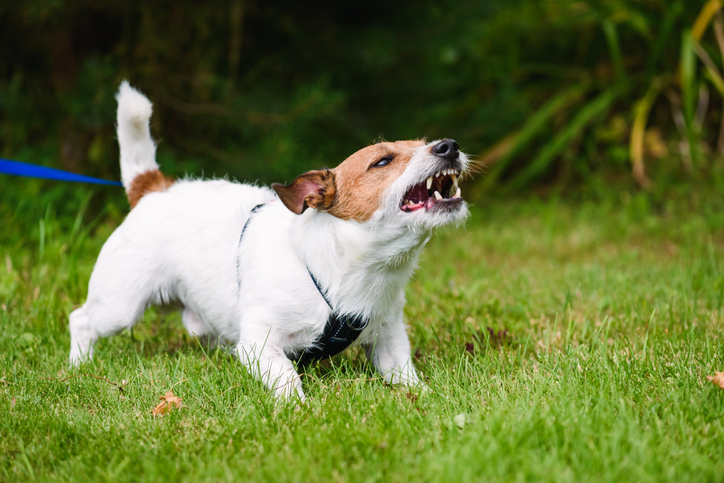
That said, you don’t need to keep your dog on a lead at all times – that would be a pretty frustrating existence for your furry friend. Dog parks, open countryside and other areas are places where your dog can safely ditch the lead. However, areas such as public parks, roads, beaches, pedestrian zones and fields with livestock will require you to have your dog on a lead.
Dangerous dogs and the law
In the UK, it is an offence to permit your dog to attack or seriously injure a person or livestock, or even – and this nuance is worth noting – to cause someone concern, by its behaviour, that it might attack them.
Dogs behaving in a dangerous manner can legally be removed by the council dog warden, and their owners can be prosecuted. If a magistrate then takes the view that the animal presents a danger to the public, it may even be destroyed.
This means that an offence doesn’t necessarily start with an attack or bite. You can end up with a prosecution if your dog is deemed simply to have behaved in a threatening or aggressive manner. This offence can carry a maximum penalty of up to six months' imprisonment and a fine of £5,000 – and, if your dog does actually injure someone, that tariff rises to a possible two years' imprisonment.
If your dog attacks and injures another person’s pet, meanwhile, the sanctions here can rise to £1,000. If the attack is deemed to have been deliberate, this increases to a ceiling of £2,500. It is only in cases where the dog has attacked a person or worried livestock, however, that a judge may order that the dog is destroyed.
How to keep your dog from being a danger to others
This is a large subject, of course. When it comes to calming your dog down in tense situations, the first crucial step is to recognise the signs when your dog is getting angry, or even simply in a state of discomfort or tension that could easily slip over into anger.
Early signs of discomfort or stress include yawning, blinking or lip licking; similarly, a dog who turns away or avoids your eyes is likely feeling unhappy about something. If your pet walks away from you deliberately, this probably means that the situation is distressing them and they need some time alone.
A little further on, signs such as staring eyes, stiff posture and raised fur indicates that a dog is feeling threatened and is beginning to show signs of aggression. More obviously, growling, showing teeth and snapping are final warnings that an attack or bite are imminent.
You’ll find more advice on recognising these signs, and how to calm down a stressed dog, elsewhere on our blog. We’ve also discussed how to train your dog to wear a muzzle, and how to keep your dog safe around livestock.
Whether it’s perpetrated by your dog on another animal or person, or suffered by your pet at the hands of an angry, aggressive dog, an attack is always a distressing event to witness. We hope to have provided some advice here on how to help your beloved pet recover from being on the receiving end of an assault – and also how to make sure your pet is never the guilty party in a confrontation.
Following this advice, and being alert at all times to your dog’s state of mind and anxiety levels, will go a long way towards ensuring a happy life for you both.
Dog insurance with Purely Pets
Could you afford to give your dog the emergency treatment it needs after a dog attack?
Contact us today for a dog insurance quote.
Policy benefits, features and discounts offered may very between insurance schemes or cover selected and are subject to underwriting criteria. Information contained within this article is accurate at the time of publishing but may be subject to change.
Helpful Pages
Recent Posts
Pet Insurance Quote
- 98% claims paid *
- Claims paid directly to vets
- 24/7 vet video consultations
- Interest free monthly payments

